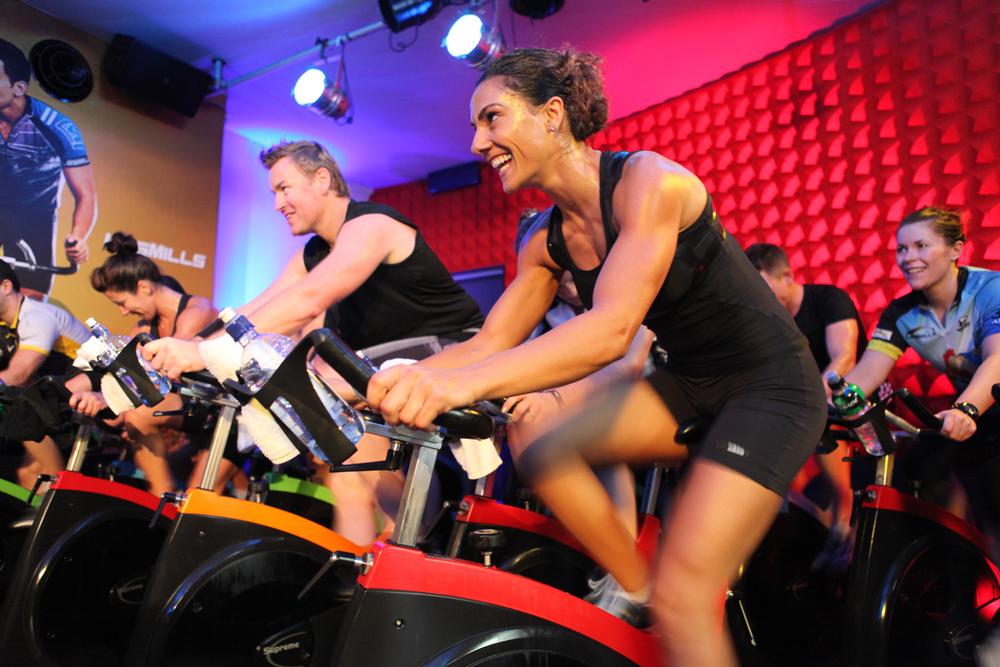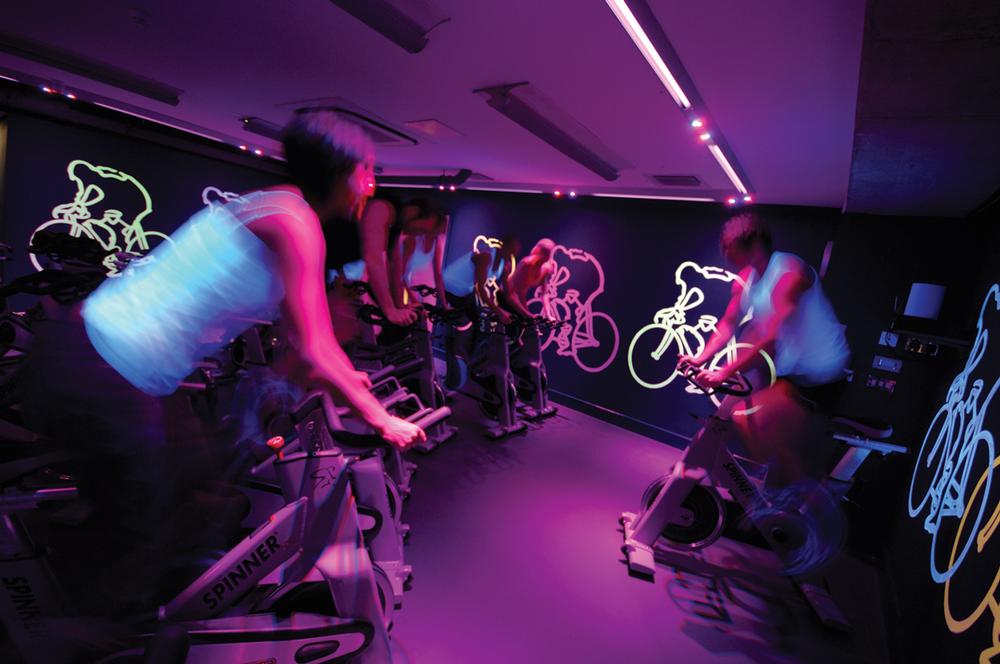features
Global markets: A land of opportunity
New research provides valuable insights into the fitness industry in Zealand. Trent Brown offers an analysis of the two markets based on the key findings of the report
The Australian economy has been the envy of much of the world in recent years. However, while it’s true most sectors of the fitness industry have fared comparatively well in globally tough times, that’s not to say that business owners are resting on their laurels.
The fitness landscape in Australia and New Zealand has changed considerably in recent years, most notably with the growth of small footprint and 24-hour clubs challenging the big players. This, coupled with reduced discretionary consumer spending caused by economic uncertainty, has resulted in a highly competitive environment.
But in spite of the challenges, it’s encouraging for the industry that more than 50 per cent of Australian and New Zealand clubs saw a growth in membership in 2013: 33 per cent saw growth of 1–10 per cent, while 26 per cent saw more than 10 per cent growth.
These are some of the topline findings of this year’s Australia and New Zealand Fitness Industry Survey (ANZFIS), conducted by Ezypay and involving almost 20,000 responses: 1,1,50 clubs and 18,940 members and non-members.
We take a look at some of the key findings and trends highlighted by this year’s report.
Smaller facilities
Although big chain clubs can be found in major cities and towns in Australia and New Zealand, privately owned single clubs enjoy a considerable slice of the market. Franchise clubs are also prominent, and PT studios and CrossFit facilities (or ‘boxes’ or ‘box clubs’ as they are also known) are also making an impact. Indeed, more than half of the facilities that responded to this year’s survey had fewer than 500 members, reflecting the market share enjoyed by small to medium-sized fitness businesses.
Facilities and services
Free weights have overtaken fixed resistance machines in popularity over recent years: in 2011, 79 per cent of clubs offered fixed resistance machines, and 64 per cent offered free weights; in 2013, those numbers had changed to 73 per cent and 82 per cent respectively. This is an interesting turnaround, and ties in with the growth in popularity of functional and bodyweight training. In leaner financial times, it may also be an indication that some clubs have embraced training formats that use smaller, cheaper free weight equipment.
In terms of group exercise, 57 per cent of responding clubs had at least one studio – an increase from the 2011 ANZFIS, when the figure was 43 per cent. The higher prominence of CrossFit facilities also reflects the recent growth in popularity of group training formats.
Over one-third of clubs say they intend to invest in gym equipment in the coming financial year: 41 per cent plan to invest in cardio equipment and 35 per cent in weight training equipment.
Changing formats
Among members who have, at one time or another, lapsed their membership, lack of time was cited as the most common reason for the decision. The industry seems to be responding, however, with the introduction of short, tough, results-focused exercise workouts – high-intensity interval training (HIIT) formats such as Tabata, CrossFit, Les Mill’s GRIT series – and even whole club concepts, such as Fitness First’s The Zone in Sydney.
Indeed, the most significant growth areas for the fitness industry – as identified by clubs responding to this year’s survey – include new workout concepts such as CrossFit, express workouts, small group training and small group fitness studios, and obstacle course events and classes. Clubs could potentially benefit from focusing on the provision of these training opportunities in their marketing and promotions.
Clubs offering budget memberships (under $10 a week in either Australian or New Zealand currency) and 24-hour facilities were also identified as potential future growth areas, as was personal training and catering for new niches – specifically adult and childhood obesity, and the growing seniors market.
Personal training
In the 2011 ANZFIS, 56 per cent of Australian clubs reported employing all of their personal trainers, while 25 per cent of clubs opted to contract their PTs. In 2013, however, this situation has been reversed, with more clubs contracting PTs than employing them.
In the 2011 survey, it was noted that the NZ experience of higher PT contracting levels correlated with fewer problems. The report observed: “It could suggest that contracted staff are of a higher quality than employed staff, perhaps taking greater ownership of their role, equating to higher education, conduct and overall professionalism.”
Most often, clubs source remuneration from PTs via a percentage of income (42 per cent), via rent (35 per cent) or a mixture of both (23 per cent). The ways in which clubs derive income from PTs has remained consistent in both Australia and New Zealand.
From a member perspective, more than half of members surveyed (55 per cent) have never tried personal training. Of the 45 per cent who currently do use a PT, many have only done so for three months or less (33 per cent). Encouragingly though, 22 per cent have used a PT for 12 months or longer.
Member acquisition and retention
The main reason members said they joined a club was location (33 per cent). Additional reasons for joining included value for money (13 per cent), or because they offered a different type of exercise (9 per cent). A mere 7 per cent joined their current club because it was cheaper, which confirms that price is no longer a sole deciding factor. It will be interesting to see how this changes in the coming year, however, as more budget operators enter the Australian and New Zealand marketplace.
When it comes to remaining a member, location was the biggest factor (54 per cent), followed by value for money (46 per cent) and having professional staff – defined as polite, approachable and on-hand (39 per cent). Indeed, when asked about interaction with staff, 60.2 per cent of members said they felt it was important on every visit to the club, with 29 per cent of members even reporting that engaging staff who made conversation, rather than just delivering an initial greeting, were an important reason why they remained a member. While clubs don’t have to be cheapest, value is key and is seen to lie in the member experience.
When asked about their overall satisfaction with their current club, 34 per cent of members say they are very satisfied and 26 per cent are somewhat satisfied; 14 per cent believe their club is OK; and 26 per cent feel somewhat unsatisfied (9 per cent) or very unsatisfied (17 per cent).
Social media
In the 2010 ANZFIS, social media didn’t feature in the top 10 most successful marketing and communication methods. In the 2011 report, it came in 10th. In 2013, however, the club’s own website was ranked first (37 per cent) with social media sites ranked second (15 per cent) – in particular Facebook.
With so many people using social media to communicate with friends and recommend or discuss their experiences – including fitness achievements, classes attended and club check-ins – these online platforms should be given a high priority by clubs looking to drive word of mouth referrals.
Certainly the majority of clubs say they plan to invest in their website and/or social media strategy in the next financial year.
However, while a high proportion of club members use Facebook (80 per cent of this year’s respondents), and are happy to see information and content in their club’s social media feed, most prefer not to be communicated with via this medium.
The future of fitness
Although operators reportedly do not perceive there to be high levels of competition, the Australian and New Zealand marketplace is increasingly busy. This has arguably been to the benefit of the fitness industry, however, forcing clubs to up their game and improve the service they deliver.
Combined with ongoing membership growth and reported plans for investment in the coming year, this all paints a picture of a buoyant industry with its eye on further growth in the years ahead.
Current issues faced by clubs
On average, and in order of importance, the most significant issues identified by clubs in Australia and New Zealand this year are:
* Government legislation
* Obtaining finance
* Staff retention
* Finding an effective software system
* Better understanding of how to use social media
* Motivating staff
* Managing staff
* Finding good staff
* Competition from other operators
* Marketing
* Member retention
* Membership sales
Trent Brown is CEO of Ezypay, a company based in Sydney, Australia, which supports businesses via an outsourced direct debit and credit card management system. He has led some of the fastest growing businesses in Australia and uses this success to share his knowledge and enthusiasm for sustainable business growth.
Web www.ezypay.com








































































